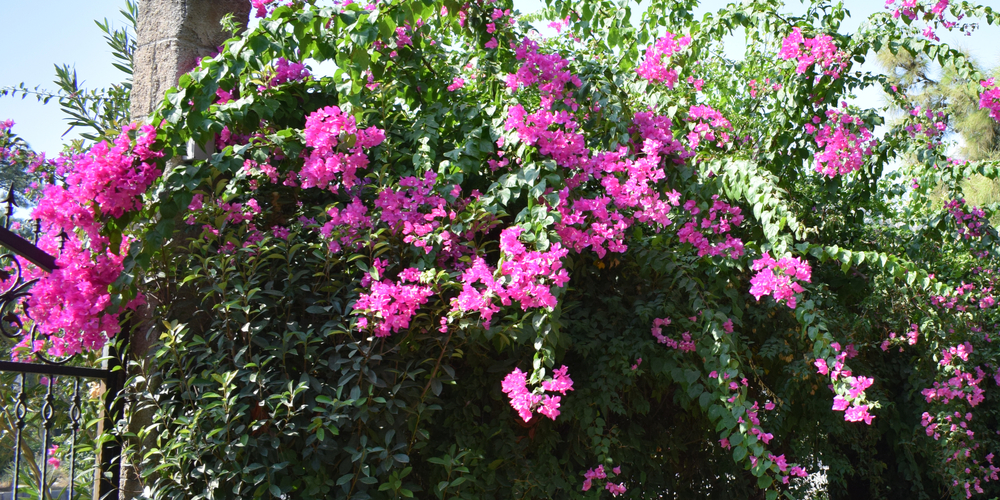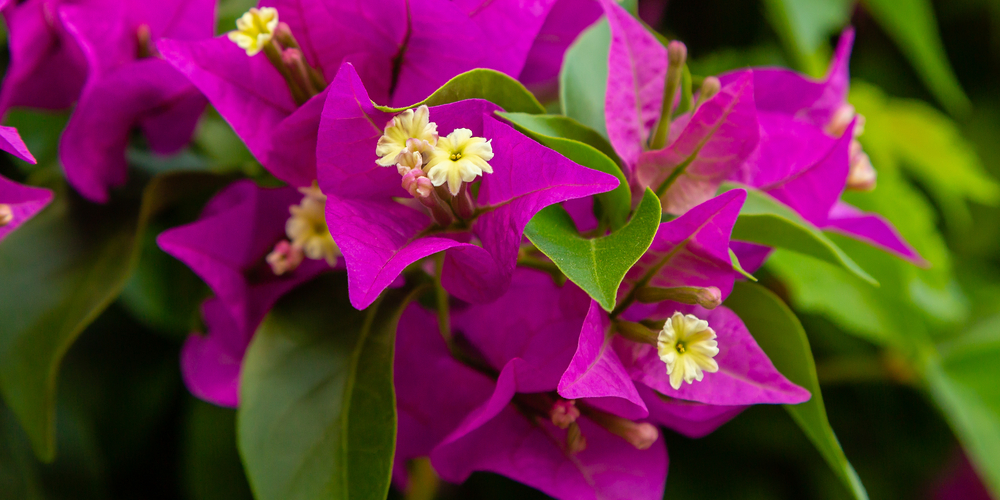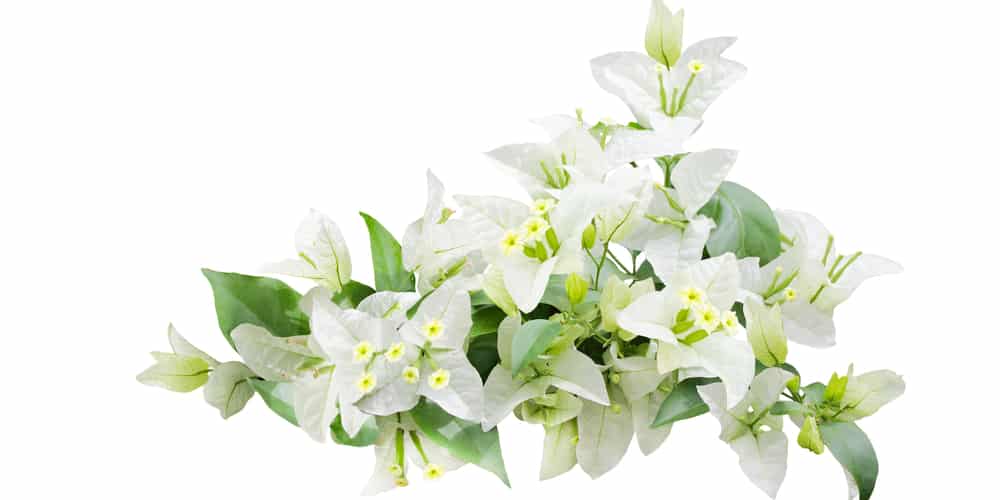Bougainvilleas are gorgeous plants that can make any place more lively. They can grow as vines, shrubs, or trees. But no matter the variety that you choose to grow, you won’t get disappointed with these plants. Bougainvilleas display vividly colored blooms in the spring and the summer and are hardy (if you grow them under the ideal conditions).
But if you want to learn more about growing a thriving Bougainvillea tree, keep reading. Despite not being too challenging to grow, you still want to be familiar with the plant’s needs and requirements to enjoy them!
| Botanical Name | Bougainvillea glabra |
| Common Name | Lesser Bougainvillea or Paperflower |
| Plant Type | Perennial |
| Flower Color | Bougainvillea trees can display flowers in several colors, including purple, pink, white, orange, yellow, and magenta. They are tubular and usually measure no more than one inch long. |
| Size When Mature | Up to 40 feet tall, but you should trim it to keep it in a more manageable size. |
| Bloom Time | Between November and May |
| Sun Requirements | Full Sun |
| USDA Hardiness Zones | 9-11 |
| Soil PH Range | Between 5.5 and 6.0 |
| Soil Type | Slightly acidic and well-draining |
| Water Needs | Medium |
| Native Area | Tropical and Subtropical regions of South America |
What you Need to Know About Bougainvillea Tree
Bougainvilleas are woody vines. However, you can train them to grow in the shape you prefer, including trees. In most gardening stores, you’ll find Bougainvilleas in the form of trees. But you can even train a smaller plant to grow into a tree by snipping the side shoots from the main trunk.
The plants grow fast (under ideal conditions, they do so at a rate of 36 inches per year) and are usually not too tricky to maintain. Also, you’ll enjoy its gorgeous flowers, which come in many bright colors (including red, pink, orange, yellow, white, and variegated shades).
If you don’t live in a warm region, don’t worry: you can try growing your bougainvillea in a pot: doing so will allow you to bring the plant indoors as the temperatures drop. Also, the plant is non-toxic, but you might want to keep an eye on your pets and prevent them from munching their leaves. Indeed, the plant’s sap contains substances that might be toxic after ingestion.
How to Care for Bougainvillea Tree
As we mentioned before, growing a bougainvillea tree isn’t anything out of this world. Still, getting familiar with the plant’s needs and requirements will help you get the most out. In the following sections, you’ll find everything you need to know!
Light
Bougainvillea trees prefer growing under the full sun. Indeed, they must receive at least six hours of direct light to produce the gorgeous flowers that characterize them. However, your plant might do well even under partial shade if you live in a hot region.
Water and Soil Needs
These plants need well-draining soils to thrive. Also, it should be slightly acidic, with pH levels between 5.5 and 6.0. Bougainvilleas are relatively tolerant to drought once they establish in the location. However, they will do much better with deep watering every couple of weeks. Doing so will also allow the trees to develop stronger roots, which can help make them less susceptible to diseases and temperature shocks.
Selecting a suitable substrate is crucial to avoid overwatering: bougainvilleas suffer from root rotting! Consider adding sand or peat moss to the soil if you need to increase drainage. Also, you may want to add a layer of tree bark: it will increase the nutrient content and improve water retention.
Temperature Requirements
Being native to South America, bougainvillea trees prefer warm climates. You can grow them outdoors as perennials in USDA hardiness zones between 9 and 11. However, you can also plant them in a pot and move them indoors as the winter arrives if you live in a colder region.
But won’t forget to reduce the watering frequency during the colder months of the year: your bougainvillea will go dormant and won’t need as much moisture to thrive.
Avoid exposing your plant to frost, especially when young. Older bougainvillea trees might be able to survive low temperatures, but young ones will die!
Fertilizer
The truth is that bougainvillea trees don’t need many nutrients to thrive. However, you can try feeding them with compost or manure to increase the nutrient content in the soil. You can also apply a balanced fertilizer in the spring to boost blooming.
Common Diseases
If you are growing your bougainvillea tree outdoors, you might have to keep an eye on aphids and caterpillars. These bugs might attack your plants and feed on their new sprouts and leaves.
Besides that, we recommend you follow a regular watering schedule and annually prune your plant to keep it in shape. Doing so will also increase the airflow and reduce the risk of attacks from pests and fungal infections.
Bougainvillea Tree Propagation
Gardeners who would like to enjoy more bougainvilleas in their yards can try to propagate their plants. There are two methods you can use: cuttings or seeds. The best one is to grow new plants from cuttings. You can do so at any time of the year, and it won’t take too much time from your side.
All you have to do is cut a healthy-looking piece of wood from your plant. Ensure it has between 4 and 6 nodes to maximize the chances of germination. You can even dip the cuttings in rooting hormone to encourage sprouting.
Then, take a container with well-draining potting mix and place your stem inside. Keep the pot in a location with suitable lighting and maintain it moist (without overwatering it) for a few months. As the plant starts overgrowing its container, it is time to move it to a new pot!


